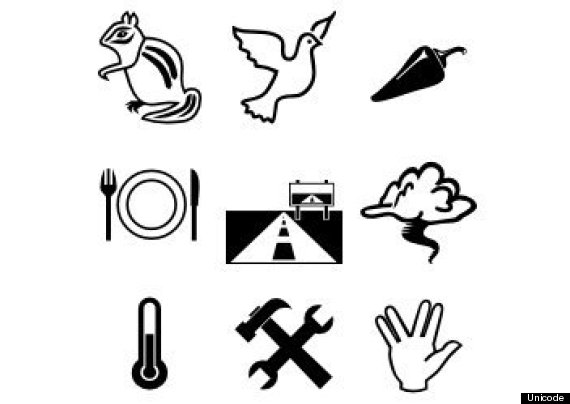An announcement last summer made us all think that new emoji were on their way to our smartphones. But here we are close to Thanksgiving, and we're still stuck expressing ourselves with the same old dolphins, diamonds and dancing duos as before.
So what happened? Two experts in the emoji industry told The Huffington Post that the excitement over impending emoji additions was actually premature. Behind the scenes, they said, there was never an exact timeline for when the much-anticipated new characters would make their way to our phones.
All the emoji on our phones start as updates to a common coding system, called the Unicode Standard, used by developers at major tech companies like Apple, Google and Microsoft. The Unicode Consortium, a group made up of representatives from tech giants, software producers and research institutions, among others, helps craft the Unicode Standard. The Unicode Consortium meets four times a year and updates the Unicode Standard regularly.
In June 2014, a Unicode update added more than 250 new emoji -- including a middle finger, a hot pepper and Vulcan salute. Everyone got pretty excited, and wondered when we'd be able to use these new expressions.

But Mark Davis, the co-founder and president of the Unicode Consortium, explained that just because there's a new Unicode update, it doesn't mean tech companies have to actually adopt the changes. It's up to Apple, Google and Microsoft to decide when to add the emoji and other Unicode changes, and that doesn't usually happen quickly.
"A new version of an OS is quite complicated, and typically the main feature set is frozen months in advance to allow for testing," Davis said. "It may be possible for a vendor to accelerate the introduction of new emoji, but it typically depends on the vendor's view of the importance of those particular characters to their users."
Jeremy Burge, whose site Emojipedia has been a leading resource in documenting emoji and their updates since its inception in 2013, said it's still completely unclear when -- or even if -- we'll get the new emoji. "We're all still guessing really," he said.
But, he added, there's a bright spot: "Unicode Consortium is made up of effectively staff and people from Google, Apple and Microsoft amongst other members. So one would have to assume that these kinds of things wouldn't be going ahead into the specification if they had no intention of supporting them," he said.
Burge guessed that "someone" will decide to support the new characters in the next year -- "whether it's Google, Apple or Microsoft."
"And I wonder if one of them supports it, the others might come on board," he said.
Even if companies decide to integrate the new code, emoji can still vary from device to device. (Beware of the hairy heart.) To combat this problem, Unicode offers base designs for their tiny characters, so the emoji don't look completely different on competing platforms. But going from a Unicode design to a final emoji is yet another step that tech companies like Apple have to take before they can release new characters.
In short, it may still be a while before we can express ourselves with a floppy disc, thermometer or chipmunk. Until then, we'll have to use ... our words.


